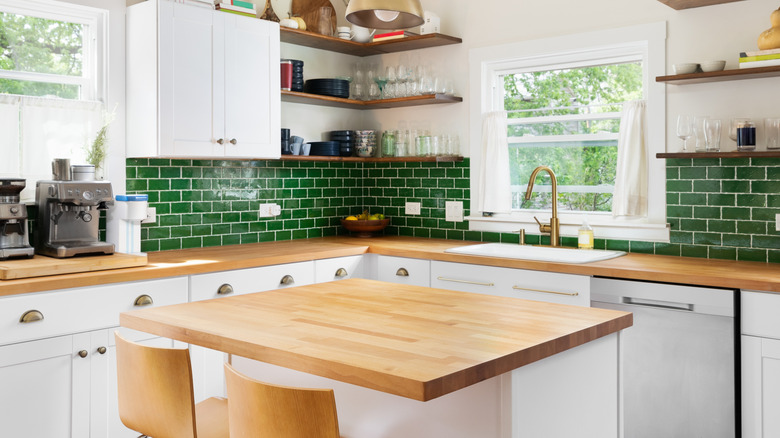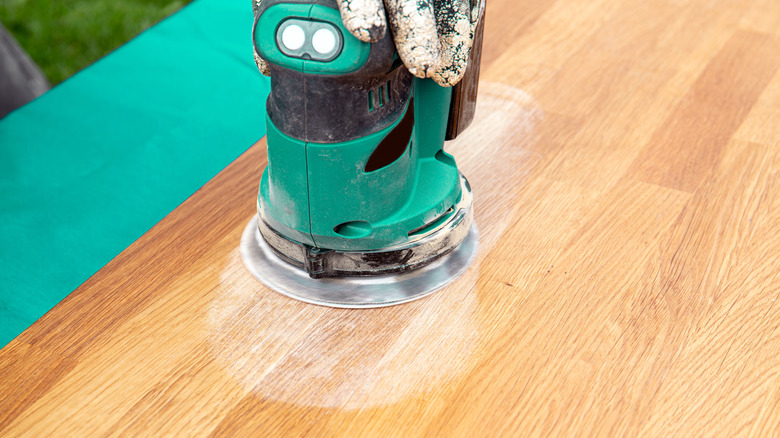Can You Chop Food Directly On Your Butcher Block Counters?
When it comes to choosing your kitchen surfaces, the butcher block countertop is a dynamo that boasts a lot of bang for its buck. Not only is it inexpensive, eco-friendly, and fairly durable, but it can also serve as a built-in cutting board ideal for chopping fruits and vegetables, rolling pizza dough, or cookie cutting. Of course, the term butcher block instantly evokes the idea of a butcher slicing up steaks and the like, but meat, poultry, and fish should be cut on a separate cutting board due to their tendency to potentially harbor bacteria.
Just because you can cut food on them, should you? The answer is... maybe. The reason it's called a butcher block is because thick wood has historically been used to chop meats. This countertop style is durable enough to handle chopping, and the wood has enough give to be easier on your knives than a harder surface, such as granite or quartzite. Still, because of the wear and tear it can cause over time, many still opt to use a cutting board.
Directly prepping food on a butcher block does come with its drawbacks, though. Sometimes, all that gorgeous, brightly-colored produce leaves stains, not to mention knives can embed slices into your butcher block, and its porous surface can grow mold and rot without proper care. While there are many things you should never do with your butcher block countertops, there are plenty of "do's" that will ensure you'll be safely chopping up fruit salads, stew veggies, and potato salad supplies there for years to come. This is just one more thing to know about your butcher block countertop.
How to maintain your butcher block counter for food prep
Keeping your butcher block countertops in pristine condition (and food-safe) takes a little effort, but it can ensure they stay in good condition for years. To combat food staining, make sure you quickly and gently scrape off all food residue with a spatula and follow by wiping the counter down with dish soap and water. Then, to sanitize and get it ready for your next food prep session, combine equal parts white vinegar and water in a spray bottle. Spray the surface and wipe it down with a clean, dry cloth. Both actions should be done daily to keep the surface clean and sanitary.
After lots of use, cuts and nicks will likely appear on your countertops, but you can give them a fresh life in a few simple steps. Start by sanding down the butcher block with an orbital sander, which evens out the surface and removes any leftover dirt, old finishes, etc. Next, you'll want to seal it. Many stains are not food-safe, so mineral oil, hemp oil, or tung oil are all good choices. However, if you're looking for something that will last up to two years and come in a range of color choices, a polyurethane sealant is also food-safe once it is dry and has fully cured. Finally, to best protect your butcher block from mold and rot, wipe up any water spills quickly before they settle into the wood.

